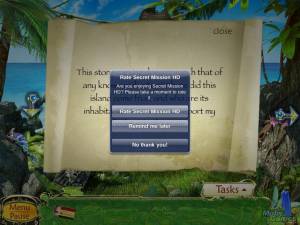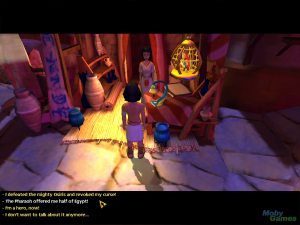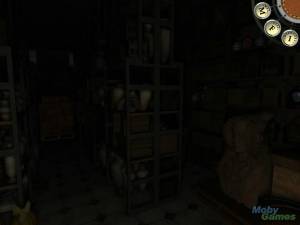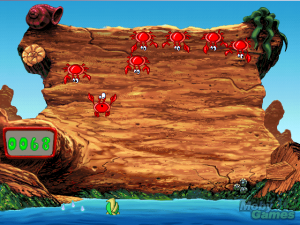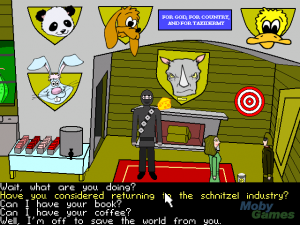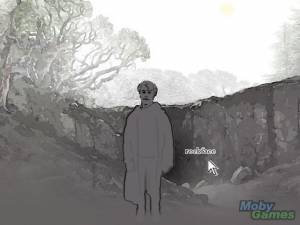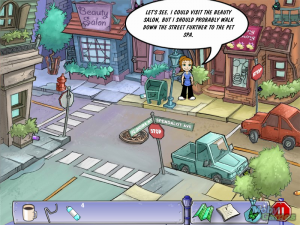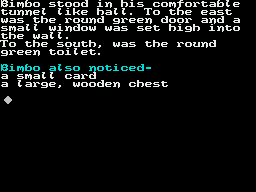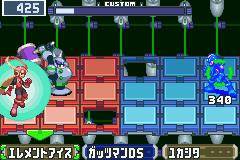Game Classification
Enlightenus Blue Tea Games, Blue Tea Games, 2009
Classification
VIDEO GAMEKeywords
Market
This title is used by the following domains:- Entertainment
Audience
This title targets the following audience:Age : 12 to 16 years old / 17 to 25 years old
General Public
Gameplay
The gameplay of this title is Game-based(designed with stated goals)
The core of gameplay is defined by the rules below:
Similar games
 A detective is called to the house of Edgar Lee, a famous but reclusive author. After arriving, entering and investigating the place, the sleuth receives a message by the writer where he explains the main source of inspiration for his novels: a machine that allows him to travel to another worlds. The detective is commissioned to use the device and search for a series of missing pages, mysteriously stolen from unfinished books and scattered through another dimensions.
A detective is called to the house of Edgar Lee, a famous but reclusive author. After arriving, entering and investigating the place, the sleuth receives a message by the writer where he explains the main source of inspiration for his novels: a machine that allows him to travel to another worlds. The detective is commissioned to use the device and search for a series of missing pages, mysteriously stolen from unfinished books and scattered through another dimensions.
Enlightenus is a hidden object title with a new gameplay twist: instead of searching for objects from a list, most of the time the objective is to drag and drop several inventory objects on logical places on the scenery.
The gameplay switches back and forth between three main sections. The first one is an exploratory adventure game, similar to first-person adventure games like Myst, where the player moves from one static screen to another representing the rooms or places of some location. The inventory is always visible at the bottom, and after clicking on items found on the scene, they float towards one of the available slots to be stored for later use. The player has to solve puzzles in the classic point-and-click manner, by dragging and dropping the inventory objects on their appropriate and logical places. In some instances clicking on parts of the scenery brings up a puzzle, where a mechanism of some sort has to be manipulated directly to solve it, or more standard challenges like a card matching memory game. The cursor is contextual, changing shape to an arrow to indicate an exit, and to a magnifying glass when another view of some scene item is available.
The second section comes up when clicking one of the scattered pages, usually found laying over the scenery. A separate screen appears showing a location depicted in the book, and the inventory slots are filled with assorted items unrelated to the main quest. The goal is to drag and drop these objects to perform some action, or complete some of the scenery items. For example, a needle can be used to pop a balloon, a hammer can break something fragile, missing antlers can be plugged back to a mounted deer's head, and other similar association tasks. After the inventory is empty, the page is complete and the player receives an engraved button to be used on the next section.
The last major section is the portrait puzzle, where the player has to place all the engraved buttons, previously received from completing all the available pages, on slots set on two columns framing a central painting depicting a novel scene. Each column has a plaque with a written clues at the top, to indicate what buttons have to be put on them. The clues are phrases and riddles, and each button has a different picture engraved on it bearing some relation to the conundrum.
A crystal ball at the bottom left acts as the hint button for all sections, circling the area where one of the inventory objects can be used and revealing three cards in the memory mini-game. Extra hints can be found and collected on the page sections, as cards with an E at the center. [source:mobygames]
Distribution : Retail - Commercial
Platform(s) : PC (Windows)
 Français
Français English
English



